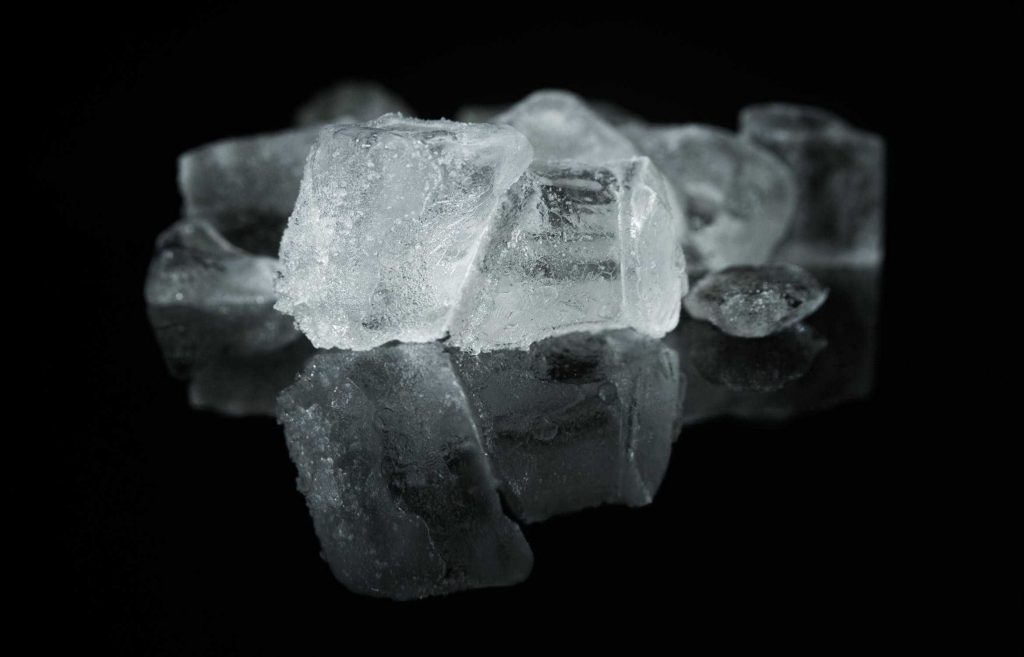Trigger Warning: You’ve Got to Stop Icing!
We have the right to change our minds. Remember that thing called prohibition? Or that time when Doctors advertised cigarettes? Maybe you grew up not needing a seatbelt in the back seat? Remember the advice to new mothers in the 1970s that formula was better for babies than breast milk? Or the idea that drinking water during practice made you weak? Remember trans-fats? Or Olestra? Those things seemed like a good idea for a minute until they didn’t.
See what we did there?
Olestra aside, we sometimes operate with incomplete information (okay, we always knew Olestra was probably a poor idea based on the leaking issues on warning label…). Being a human being means making the best decision with the best information at hand and making better decisions when that information becomes more complete.
When it came to the use of ice to treat injuries, it has always pretty much just been a given. I iced in high school and in PT school and we never thought to wonder if it was doing what we thought it was doing.
So what is it doing? Icing injuries that is.
Ask yourself, “why do we ice?”
If you were part of the well indoctrinated like me, your answer probably fell into one of two responses. The first was likely “for pain” and the second was “to stop swelling.” You aren’t wrong because ice actually does both of these things well. It just turns out that we asked the wrong question.
So how about asking these two questions instead: (1) Is the body’s healing response to injury a mistake? (2) Does icing help my body remove the congestion from the injury?
Even without a doctoral degree and a truckful pathophysiology coursework, the answer to those questions is a pretty clear “no.”
About ten years ago, I was presented with these same questions by Gary Reinl, author of the book Iced. I knew Gary worked with literally every rehab team in professional sports and that he had a technology that could maximize healing times. What I didn’t realize was that he would ultimately present me with a simple but profound question: “How does the body remove congestion and swelling?”
As you will see in our interview, I’ve spent the last decade trying to convert people back to the idea that movement (muscle contraction) is the best way to reduce congestion in injured tissues. I’ve been working with the company HWAVE for almost a decade and their device is the best at decongesting tissues.
Do you know what doesn’t help reduce congestion in injured tissues? You guessed it, icing.
Back in 2012, I was naive enough to think that if Gary and I had an informal conversation about icing on camera, we might just move quickly past a few decades of operant conditioning and knee jerk ice that ankle-ing. Boy was I surprised when the collective reaction on the internet was short of hatred and disbelief. “What? The Earth is Round?! Ha hahahahaa…”
Fast forward another eight years and the mood may have shifted a bit. I’ll be completely transparent in that being on the correct side of outcomes, science, and logarithmic anecdotal experience helps a bit. We still thought we should take a moment and revisit the original idea. Both Gary and I are a bit more experienced at telling the emperor he’s wearing no clothes. And, that his clothes are getting in the way of his body’s ability to heal itself.
Before you freak out, let me leave you with a couple of ideas. If your kindergarten-aged daughter freaks out and needs an ice pack, tell her there is no science to support her need for a placebo. Just kidding, don’t do that. Give her an ice pack. But also tell her there is no easter bunny. I kid again. She isn’t going to ice that booboo for long anyway.
And.
We all have the right to change our minds when better information comes along. As they figured out in the prohibition experiment, Bourbon is better with some ice. Enjoy this conversation with Gary, and don’t take our word for it. Go see for yourself.
– Kelly



















TRS Virtual Mobility Coach
Guided mobilization videos customized for your body and lifestyle.
FREE 7-Day Trial